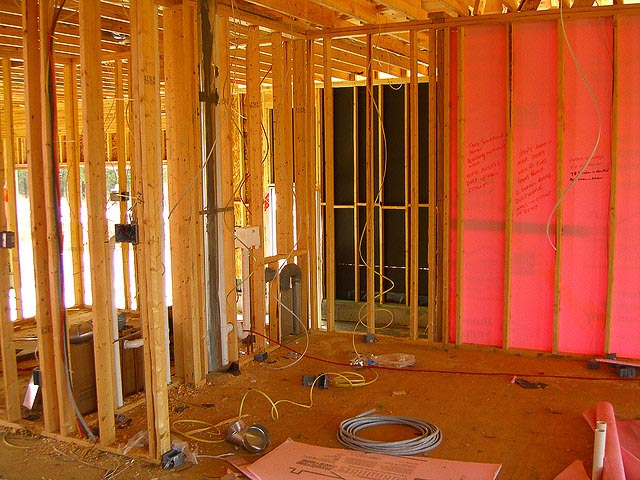Everyone, it seems, thinks their city is in the midst of a building boom.
As the economic recovery continues and real estate markets react to years of slow construction, cities find themselves in debates about how to address housing affordability amid existing residents' anti-development sentiment.
But while it might feel to urban residents that they're surrounded by unprecedented construction levels, data from the U.S. Department of Housing and Urban Development show there's a wide variance among cities when it comes to how much building is actually taking place.
We decided to take a closer look at what's happening in cities concentrated in the west and the Sun Belt, where the Kinder Institute focuses its research.
The Austin metro area, as many there have noted, is indeed well ahead of the field.
Meanwhile, in and around Los Angeles (where civic leaders have touted a surge in downtown building) builders are erecting fewer new homes relative to the city's size than any other large Sunbelt or western city.
The chart below shows the average number of new units built annually for every 1,000 residents over the last three years in the selected metro areas, according to the U.S. Census. We measured per 1,000 residents to compare areas of different sizes. The different bubble sizes represent the area's rate of population growth since 2012.
Austin produces the most homes relative to its population and has the fastest population growth rate. San Antonio, meanwhile, has a fast-growing population-increasing 4.1 percent since 2012, fourth highest among these cities - but has permitted an average of 3.5 new homes a year for every 1,000 residents over the last three years, fifth-lowest among these metro areas.
But it's California's largest metro areas that are clearly trailing the field.
Los Angeles, San Diego and San Francisco are producing the fewest homes relative to their size of the selected cities.
Gary London, who as president of The London Group is a consultant for real estate development in California, Phoenix and Nevada, said the housing production results look exactly as he'd expect.
He said the low production of housing in California is a result of a cumbersome regulatory process that is so expensive and difficult it chases would-be investors out of development entirely.
"This chart is an edification of the fact that we just don't have the ability to deliver enough housing to keep up with household growth," he said, attributing low housing construction to the California Environmental Quality Act (CEQA), and regularity constraints in general.
But the results in San Jose, the 10th-largest city in America, may deflate that argument. It has more than three times as many homes per 1,000 residents as Los Angeles. It sits between Tampa Bay and Dallas-Fort Worth in per-capita housing production.
Overall, there's a strong correlation between how fast metro areas are growing and how much housing they're building. Unsurprisingly then, famously fast-growing cities Austin, Houston, Denver and Seattle are near the top of the list in housing production.
Measuring production by cities specifically - rather than metropolitan areas - changes things only a little.
San Francisco moves into the middle of the pack and ahead of San Jose, suggesting it's really the surrounding cities - and especially Oakland - that are producing the fewest homes per 1,000 residents of any of these cities.
Austin, Orlando and Seattle remain at the top of the list in housing production; they're also at the top of the list in population growth rate.
The San Antonio metro area, meanwhile, is among the fastest growing of the cities listed, but in the bottom third in terms of new home building.
But if San Antonio by this measure isn't building as much housing as its growth would suggest it should, Atlanta is its opposite. The fourth slowest growing of the cities listed, greater Atlanta is nonetheless building more than nine homes per 1,000 residents, fourth-most among the group of cities.
Still, some say using population totals to measure housing demand has limitations.
"The problem with housing per population is the assumption is that all population growth is equal in its demand for new housing," said Erik Bruvold, president of the National University System Institute for Policy Research in California. "You could imagine a metro area's population growth being driven by in migration, or one driven by babies being born."

